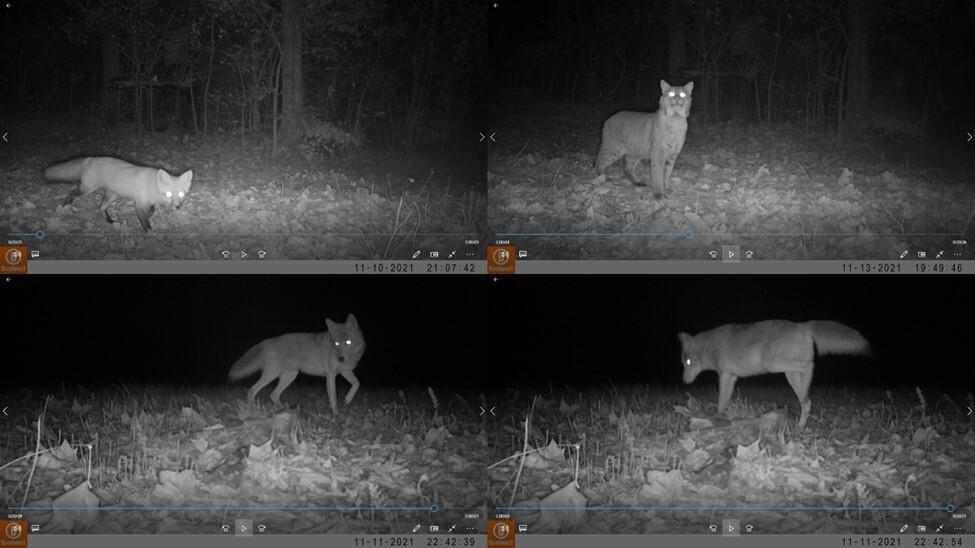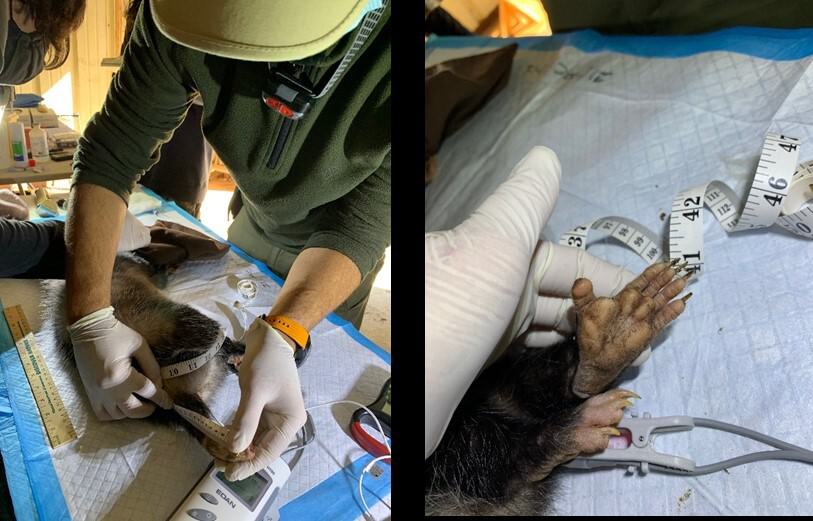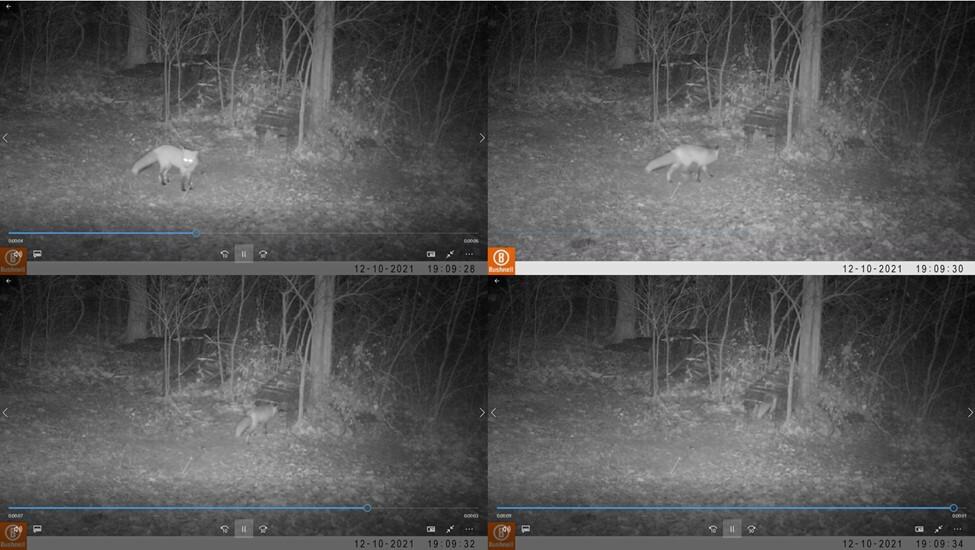Fernando Nájera, DVM MS PhD
Post-doctoral Fellow
Saint Louis Zoo Canid Conservation Initiative
The Saint Louis Zoo is leading a new Missouri-based project called the Canid Conservation Initiative. This is a collaborative program between the Zoo, Washington University (Living Earth Collaborative) and the Endangered Wolf Center located in Eureka, Missouri.
We are looking to answer ecological and health-related questions about canids – red foxes, gray foxes, and coyotes – as well as bobcats, which live in close association with canids. We are studying where these native Missouri animals live, their health status, and if these animals are suitable indicators of ecosystem health. The project is working in two ecologically distinct study sites: a rural area at the Tyson Research Center near Eureka, and a suburban area at the Saint Louis Zoo WildCare Park, located in north St. Louis County.

Top left: red fox; top right: bobcat. Bottom: coyote. These photographs were taken at Tyson Research Center in 2021. Credit: Tyson Research Center.
Animal Tracking
For researchers to follow and study the local wildlife, they lean on telemetry tracking devices. These devices, which look similar to a dog collar, are placed on the targeted species and use GPS to track their movements. But before we can track the canids, we first have to humanely and safely trap the animals. Based on previous camera trap photos provided by Tyson Research Center researchers, humane cage traps are placed in areas intensively used by the target species and supplied with bait. These traps are built to hold the animal without causing harm or undue stress to the individual. As you might guess, meat is an appealing bait for carnivores! One of the most successful baits has been road-killed deer provided by our partners at the Endangered Wolf Center.
When we have a new animal, we take blood, hair and feces samples of the target species, as well as those they interact with, such as raccoons and opossums. This information helps the researchers understand the health of these wild animals and provides a database of information that may be relevant in years to come in this field.

Researchers take biological samples, measurements and perform a physical examination on an opossum under anesthesia. Credit: Saint Louis Zoo Institute for Conservation Medicine
Patience Is Key
This process has taught the team to be patient, as these animals are smart and wary of anything unusual in their environment. It can take many nights before an animal is comfortable enough to walk into the trap for a free meal.
These photos of a red fox (shown below) represent over a month of attempted trapping. As the animal became more and more enticed by the food, it eventually went into the cage trap. We were then able to collect data, add the tracking device and release it back into the wild.

Photos of a fox moving around the trap. It took over a month before the team was able to safely capture the fox. Credit: Tyson Research Center.
With over 200 trap-nights into the research project, researchers were able to take samples from 16 opossums, 12 raccoons and a red fox. Excitingly, the Zoo recently was able to sample two bobcats as well!
Important Research
Sampling the carnivore community at the Tyson Research Center and the Saint Louis Zoo WildCare Park will give researchers the information needed to understand disease exposure in these species, including the possible presence of diseases that are transmitted from animals to humans, called zoonotic diseases.
So far, we have one fox and two bobcats running around the forest of Missouri with GPS devices! As we continue to research in the coming months, we will learn more information about the health and ecology of these amazing creatures that share our habitats with us!

